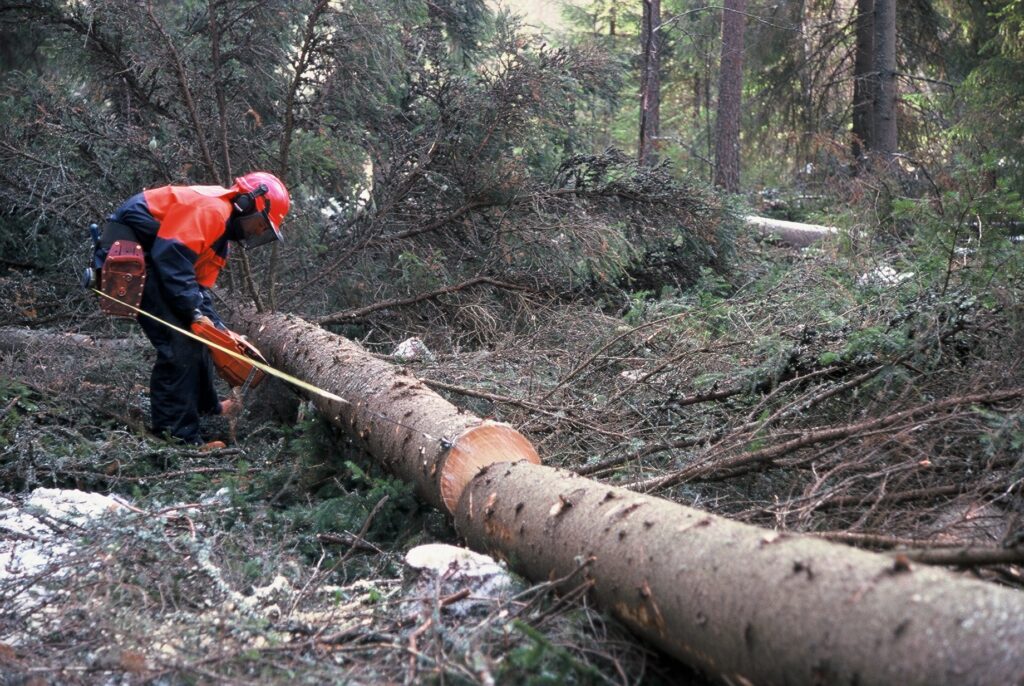Finland’s national forest strategy highlights climate-sustainable forestry – EU plans yet another set of criteria for sustainable forestry

The brand-new update of Finland’s national forest strategy up to 2025 introduces new goals, including climate-sustainable forestry; new, wood-based products and an international forest policy that could encompass the European Union, for example.
Until now, the thinking was that the results sought by these new goals would be reached by implementing the other goals in the strategy. By including them in the list of goals, the Finnish Ministry of Agriculture and Forestry wants to highlight their fundamental importance for the sustainable use of the country’s forests.
Climate may be considered a self-evident factor: it must be taken into account in all human activity. The strategy looks for new ways to increase the climate-sustainability of forest use. These could include increasing the diversity of tree species in forests, improving forestry methods and preventing forest damage.
’We have also listed needs for additional research, such as on the feasibility of any carbon compensations and the links between supporting biodiversity and preventing climate change,’ says Katja Matveinen, Forest Specialist at the Finnish Ministry of Agriculture and Forestry.
Matveinen considers that the climate-wise forestry launched by the Finnish state-owned forest company Metsähallitus last November could provide useful models for the development work. ’One of the climate goals is familiar: increasing forest growth. Here we can make use of the road map to resource-wise forestry created by Natural Resources Institute Finland,’ says Matveinen.

Providing useful solutions enables forests to be used
The goal of developing new, wood-based products may actually be crucial for the forest sector: no sector can survive simply by being sustainable; it is necessary to produce something useful that people are prepared to pay for.
As things stand now, the use of forests already provides a wide range of solutions for both individuals and humankind as a whole, and new wood-based products are launched all the time. According to Matveinen, the strategy will support this activity by, for example, funding research and development. The body in charge of this project is the Finnish Ministry of Economic Affairs and Employment.
’The strategy states that the preparation of an international forest policy in Finland will be enhanced by involving the stakeholders, such as the industries and forest owners,’ says Heikki Granholm, Forest Counsellor at the Finnish Ministry of Agriculture and Forestry.
At the moment, the EU Commission’s initiative on sustainable finance is keeping the ministry busy. ”The objective is good: to ensure that finance is only channelled into sustainable activity. However, it does not take into consideration that the member states and various stakeholders in the forest sector already have many tools to take care of sustainability; instead, they want to develop yet another set of criteria to ensure this,’ says Granholm.
The EU is set to start negotiations on a legally binding agreement on forests in Europe with the non-EU countries of Europe. ”An agreement would create a better operating environment for forestry. For Finland, it would be important to have the large forest countries outside the EU, such as the Russian Federation and Turkey, join the agreement,’ says Granholm.
In other respects during 2019, Finland’s international forest policy will be implemented under the auspices of the Finnish EU presidency starting in July. The focus will lie on promoting the development of the EU forest strategy and commencing its implementation.

Comprehensive view on sustainability attracts interest
According to Matveinen, what is central in the updated strategy is the effort to harmonize all aspects of sustainability, such as climate, biodiversity, social and economic sustainability, with each other. “In fact, no other course would be possible for a ministry behaving responsibly, and this is also required by our international obligations,’ says Matveinen.
Matveinen says that the UN Agenda 2030 and its Sustainable Development Goals provide a good description of the goals of the Finnish strategy. The most important ones among them are Life on Land, which naturally includes forests, Responsible Consumption and Production and Climate Action.
The Finnish approach has also attracted interest abroad. Representatives of several European forest countries, such as Sweden, Norway and Austria, have visited Finland to learn more about it.
Criticism against the use of natural resources is frequently narrow in scope, in the sense that it deals with the implementation of only one viewpoint. The aspect chosen is often biodiversity and, recently, very often the climate.
However, the Paris Agreement on climate change mitigation, for example, expressly demands that climate actions must be implemented in harmony with the other sustainability goals. A climate policy that would ruin people’s livelihoods would not gain support from the citizens.
The Government of Finland approved the update of the National Forest Strategy 2025 on 21 February. The new cabinet sworn in after the parliamentary election in April will determine the details of implementing the strategy.
Press release of Finnish Ministry of Agricultyure and Forestry
Kirjoita kommentti